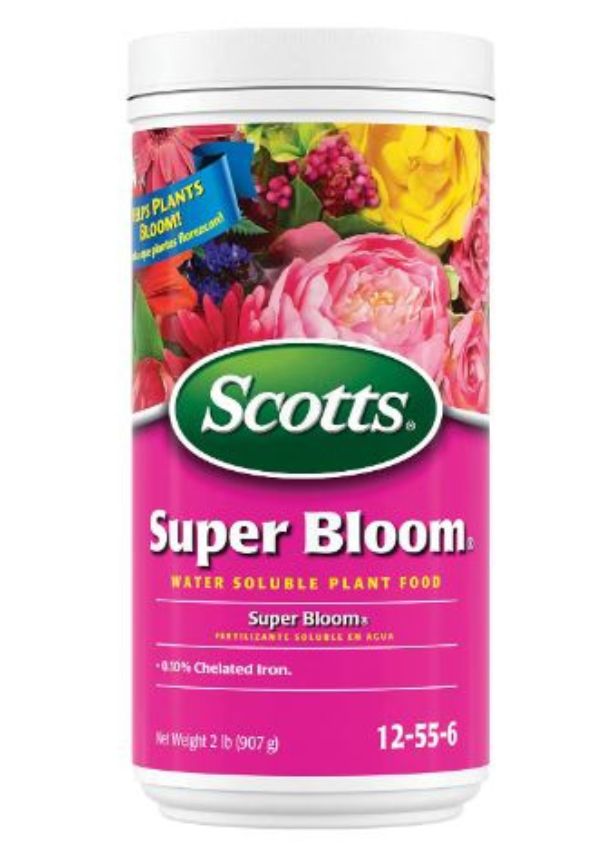Unveiling The Best Fertilizers For Flowers That Will Transform Your Garden: Blooming Beauties
Fertilizing flowers is an important duty that many beginners miss. You definitely need enough sun and water to develop lovely flowers in your garden. What about floral fertilizers, though? Yes, you will require those as well!
All-purpose fertilizers with the necessary macronutrients nitrogen, phosphorus, and potassium, denoted as NPK, such as 24-8-16 or 12-4-8, are the best fertilizers for flowers. Flowers do not require very high phosphorus levels in fertilizers to bloom. Flowers require more nitrogen fertilizers (N).
Keep an eye out for the “N-P-K ratio” when selecting fertilizer. That stands for nitrogen(N), phosphorus(P), and potassium(K) and represents the percentage of each nutrient in the bag.
Each ingredient contributes to plant health: nitrogen supports healthy leaf growth, phosphorous aids in the development of strong roots and flowers, and potassium encourages vigor.
Which of your flowers should you be looking after?
Not only do your garden beds require fertilizer, but flowers in planters or containers do as well because water causes nutrients in these plants to seep out of the soil more quickly.
There are numerous fertilizer application techniques to attempt, including slow-release granular formulae mixed into the soil, spikes inserted in the root zone, and water-soluble liquids added to your watering can.
Types Of Fertilizer For Flowers
Four fertilizer types provide versatile options for a wide range of applications and gardening preferences.
- Quick Release – Liquid/water-soluble solutions provide immediate nutrition absorption. As a result, plant improvement and growth are accelerated.
- Slow Release – Concentrated granules and spikes provide a constant stream of nutrients throughout time. There is little chance of plant burn.
- Organic – Derived from plant materials, minerals, and animal byproducts that provide natural, essential nutrients. Plants are nourished while soil fertility is improved.
- Inorganic – Made with minerals and chemicals, these can result in a rapid increase in growth. However, it has the ability to pollute soil and contribute little to soil fertility.
Best Fertilizers For Flowers
1. Best Water-Soluble Fertilizers

One-of-a-kind water-soluble bloom-enhancing compound for flower growth in less-than-ideal soil. Adds nutrients quickly to enhance soil and lengthen the bloom period. Dilute quickly using watering cans or hose attachments. Bloom time is extended beyond expectations.
Nobody’s soil is perfect, and no product appears to comprehend that more than Jack’s Classic’s phosphorus-rich blend. This water-soluble choice will support flowers growing in everything from “moderately fertile soil” to “essentially just dirt”.

How to Apply:
- Apply 1 teaspoon per gallon of water (or more for additional dilution) to flowering plants once a week.
When applied as instructed, Scotts’ water-soluble, phosphorus-rich mix provides fast feeding while protecting against root burn. This is effective in both hot and cold regions. It is suitable for single-season bloomers to longer bloom durations.
How to Apply:
- Before applying, wet the soil.
- Then, for each gallon of water used, add two teaspoons and water regularly.
- Repeat 7-14 days later.
2. Best Organic Fertilizer

This is a phosphorus-rich fertilizer that promotes flower bud development. It is It is a 100% organic, slow-release bone meal that supplies nourishment for up to four people. An easily available organic nutrient source. It contains micronutrients that are essential for plant health.
How to Apply:
- Mix in 1-2 tbsp of each hole for new transplants, then water thoroughly.
- Side dress established plants with 2-4 every month during the growing season.
3. Best Fertilizer Spikes

This is a quick, convenient, and mess-free solution to improve soil condition while also assuring the proper NPK ratio for bright and plentiful blooms as well as healthy foliage.
Roses and other flowering bushes benefit from good feeding. The slow-release formula allows for longer feeding times and fewer applications. Jobe’s spikes are designed to promote the growth of exquisite roses. However, with an NPK, other bloomers may benefit as well.
How to Apply:
- Apply this blend of healthy microorganisms and organic nutrients to roses and other blooming perennials every 4-6 weeks, beginning in spring when new growth emerges.
4. Best fertilizer For Blooming

Natural materials are used to nourish soil microbes. It contains essential micronutrients. When compared to unfed plants, it promotes more flowers and outstanding color in blooming plants and roses. This is good for roses and flowering plants, both new and old. Plants feed for up to three months. It removes the guesswork from feeding. This can be used on all flowering plants, both in the ground and in containers.
How to Apply:
- 1 tbsp per 1 sq ft should be applied uniformly across the soil.
- Apply it dry.
- Pre-mixing with water is not recommended.
- 29 Bucket Gardening Ideas for a Lush, Compact Garden - October 30, 2024
- 20+ Chic Boho Bedroom Ideas for a Cozy and Stylish Retreat - June 20, 2024
- 12+ Modern Boho Living Room Ideas to Create a Unique Oasis - June 10, 2024







